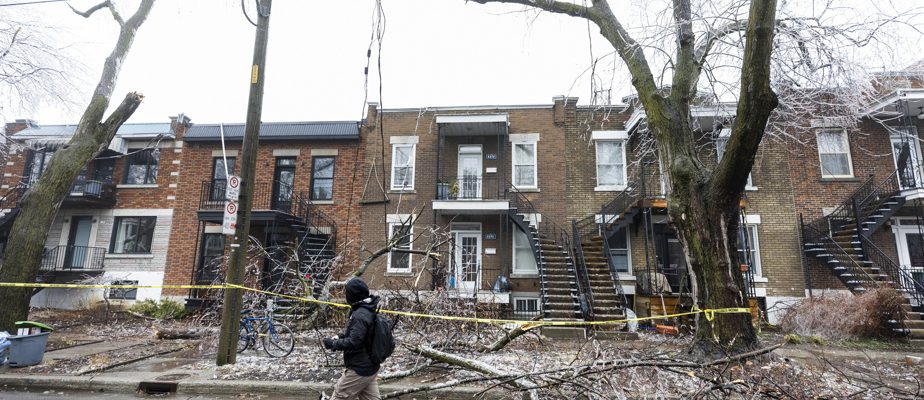Methodology
In the aftermath of the freezing rain storm, we criss-crossed the streets surrounding Molson Park – one of the hardest hit locations, according to our team of photographers – and systematically noted the addresses in front of which the trees with the greatest damage were located. . We then identified 159 of these trees in the Rosemont–La Petite-Patrie street tree database, provided by the borough. This file of some 23,000 trees indicates the species of each individual, its diameter, its approximate year of planting and certain maintenance and pruning operations carried out by the borough.
Silver maples and striped ash trees hard hit
Among the damaged trees, 36.6% were silver maples, while this species represents 18% of the trees on seven streets that we surveyed. The same goes for the red ash, which represents 36.4% of damaged trees, for 20% of the livestock in the streets analyzed. “It is well known that these two species are more likely to be affected by ice. These are trees that have very strong growth and a great ability to rebuild their crown quickly after pruning, but whose wood is less solid”, underlines the professor of forest management and biodiversity at the University of Quebec in Outaouais Christian Messier. . They are found a lot in the city because these species have an excellent tolerance to de-icing salt, compacted soil and pollution.
Large trees most affected
Another observation: “It’s the big trees that break,” summarizes Alain Paquette, biodiversity specialist in the department of biological sciences at UQAM. The average diameter at breast height (DBH, a standard measurement in forestry) of the damaged trees was 50 centimeters, while the average of the trees on the seven streets surveyed was 27 centimeters.
I dare to venture. It’s not the small branches, but the big ones that are the problem.
Alain Paquette, biodiversity specialist in the department of biological sciences at UQAM
Some very tall trees, such as poplars, will lose a lot of small branches during an ice storm, which protects the large branches by making them lighter. For other species, it is the large branches that give way, causing more damage.
older trees
The age of Montreal trees is in most cases approximate, computer databases being non-existent before the 1980s. 51% in the borough as a whole. This data does not necessarily mean that the trees are at the end of their life: “Trees are immortal, emphasizes Christian Messier. Their cells do not age like those of humans. However, the bigger they get, the harder it is for them to get the water and nutrients they need. They then become more susceptible to attack by insects and must increasingly spread their branches to maintain their light supply. Trees can lose up to 30% of their foliage without impact, but if pruned too much, they can die.
For a diversity of species
The striped ash, one of the most common trees in Montreal, embodies an important paradox. In the middle of the XXe century, tens of thousands of elm trees were mown down by a microscopic fungus originating in Asia, which spread throughout North America. They were then massively replaced by this species of ash, very acclimated to the urban environment, which represents about 20% of Montreal trees. Today, it is these ash trees that have been devastated by an insect, the emerald ash borer, and which will disappear from the landscape within ten years.
Each species is likely to experience different problems. The solution is to increase diversity. That way, when stress occurs, we don’t end up with large-scale disasters. In addition, it helps reduce allergy problems.
Alain Paquette, biodiversity specialist in the department of biological sciences at UQAM
The researcher is the author of a “strategic guide” to help municipal officials better diversify species and bring together trees that resist strong winds, drought, floods, intense cold, sudden mild spells in winter. and exotic diseases. Slightly neglected species, such as Japanese white pine, serviceberry and hawthorn, are expected to make a comeback.
Artificial intelligence to predict breakouts
Christian Messier hopes to develop, in the medium term, a new technique of “precision urban forestry” to predict the breakage of large branches, thanks to an inventory carried out with a mobile LIDAR before and after the freezing rain storm. “We want to use artificial intelligence to determine, with this database, which species and which branches are problematic, and develop a pruning plan that reduces the risks,” he explains. For the moment, this project is only at the development stage.
With the collaboration of Marion Laniel, data science team of The Press
